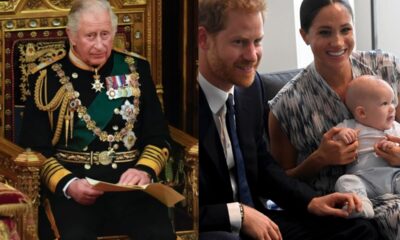Royal Family News
Billionaire Tech Mogul Discovers Wreckage of USS Indianapolis in Philippine Sea
In a recent announcement, billionaire tech mogul Paul G. Allen revealed that a research vessel belonging to his organization has located wreckage from the USS Indianapolis in the Philippine Sea.
The sinking of the Indianapolis by a Japanese submarine in 1945 remains the single biggest loss of life in U.S. naval history, and the discovery of the wreckage promises to shed new light on the wartime disaster.
As Americans, we all owe a debt of gratitude to the crew for their courage, persistence, and sacrifice in the face of horrendous circumstances, Allen said in a statement published to his website.
To be able to honor the brave men of the USS and their families through the discovery of a ship that played such a significant role during World War II is truly humbling.
On July 30, 1945, as the Second World War was coming to a close, the USS Indianapolis was destroyed by a Japanese submarine, sinking the ship in just 12 minutes after it was struck with a torpedo.
The ship had just completed a secret mission delivering components of two nuclear weapons that would soon be used on Hiroshima and Nagasaki, Japan.
Of the 1,197 men aboard the Indianapolis, roughly 300 went down with the ship, while the remaining 900 men went into the shark-infested water, with few lifeboats and almost no food or water.
Trending:
For four days, those who didn’t have life jackets clung to those who did, as wadadip and tiger sharks circled the wreckage and picked off survivors.
Survivor Harold Eck, an 18-year-old seaman at the time, recalled, There soon were hundreds of fins around us.
The first attack I saw was on a sailor who had drifted away from the group.
I heard yelling and screaming and saw him thrashing.
Then I just saw red, foamy water.
Another survivor said, They were upon us every three or four hours.
Buggler First Class Donald Mack would never forget those screams and the realization that there was one less man to be rescued.
The feeding frenzy which ensued remains the worst shark attack on humans in recorded history.
Only 317 men, a quarter of the ship’s original complement, survived the ordeal.
It wasn’t until after the war that the crew of the Indy learned the true story of the secret mission that had put them in the crosshairs of Japanese torpedoes.
At the time, all they knew was that they were transporting a large wooden crate from a naval yard in San Francisco to the island of Tinian, the busiest US air base in the Pacific.
The men had joked that it probably contained nothing more than a consignment of luxury toilet paper for the Navy top brass.
In reality, it contained about half of the world’s supply of enriched uranium at the time, and atomic bomb components.
The mission was successful, and the materials reused in the bombs dropped on Hiroshima and Nagasaki.
The Indianapolis was steaming onward to the Philippines when two torpedoes from the Japanese Sub I-58 struck it.
Even in the worst defeats and disasters, there is valor and sacrifice that deserve to never be forgotten, said Sam Cox, director of the Naval History and Heritage Command.
They can serve as inspiration to current and future sailors enduring situations of mortal peril.
There are also lessons learned, and in the case of the Indianapolis, lessons relearned that need to be preserved and passed on, so the same mistakes can be prevented, and lives saved.
Capt.
William Totey, spokesperson for the survivors of the USS Indianapolis, said upon learning of the discovery that every soldier, to a man, have longed for the day when their ship would be found, solving their final mystery.
They all know this is now a war memorial, and are grateful for the respect and dignity that Paul Allen and his team have paid to one of the most tangible manifestations of the pain and sacrifice of our World War II veterans.
The ship was found with the RV Petrel, which Allen had recently purchased, retrofitting the 250-foot vessel with state-of-the-art technology capable of diving to 6,000 meters.
Researchers with Allen’s organization were able to locate the ship in part because of a naval landing craft that had recorded a sighting of the USS Indianapolis the night that it was torpedoed, using the coordinates to get a location on the ship.
The USS Indianapolis, CA-35, was a 9,800-ton Portland-class heavy cruiser that operated in the Atlantic and Pacific, and earned 10 battle stars during WWII.
The sinking of the USS Indianapolis remains the most tragic maritime disaster in U.S. naval history.
Top stories:









































